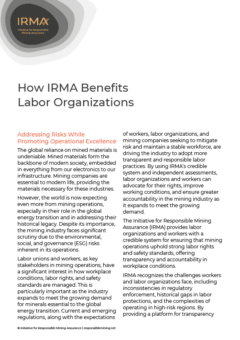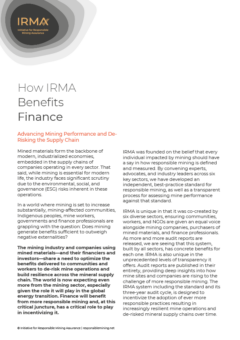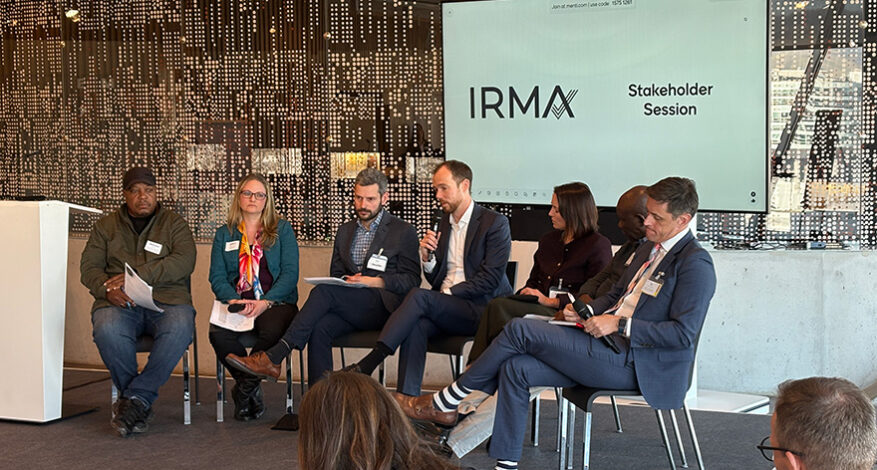As part of IRMA’s annual in-person board meeting hosted by Mercedes-Benz in early March, IRMA convened a dialogue between 80+ attendees to better understand how they can work together and also use the IRMA system to achieve their diverse goals.
For a full afternoon, attendees exchanged learnings and ideas about how to grapple with ever-present questions about transparency, traceability, and the cost of responsible mining, all with the aim of hearing from each other and taking back fresh ideas on how to inform their own work.
The dialogue occurred in two parts. To begin, IRMA Board members representing our six governing houses – Meshack Mbangula from Mining Affected Communities United in Action in South Africa, Glen Mpufane from IndustriALL Global Union, Jim Wormington from Human Rights Watch, Johannes Danz from Mercedes, Katie Fergusson from Anglo American, and Ashley Claxton from Royal London Asset Management – each how they have used an IRMA audit to advance their organizations’ goals. 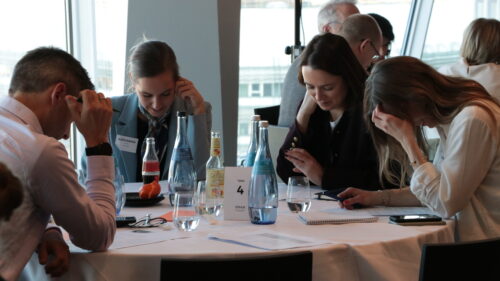
After that all attendees divided into nine groups to discuss one of three issues:
- Is there such a thing as too much transparency? Although transparency benefits all stakeholders, it can also bring heightened scrutiny and criticism for mines, consumer-facing brands, and investors. What do diverse stakeholders most need when it comes to valuing transparency?
- What do diverse stakeholders most need when it comes to market signals and traceability given the indirect contact between the many upstream and downstream players in the mineral supply chain?
- What’s really at play when it comes to the cost of an IRMA audit? Stakeholders find audit cost concerns are more related to the cost of improvements that result from an IRMA audit’s transparency, rather than the audit itself. How can stakeholders signal the value of an audit?
Some of the discussion results:
- For mines, IRMA audits and the audit process provide a clear roadmap and driver toward operational excellence. The audit is as much for a mine’s own operational and strategic benefit as it is for anybody else’s.
- For impacted communities, nothing about us without us. The *process* of the IRMA audit provides as much or more value to communities as the audit itself. It provides an opportunity for inclusiveness, fairness, dignity, and importantly, a voice.
- As demand for mining rapidly increases, so too does the need for capital to finance it. For investors, IRMA audits provide the necessary visibility and assurance to credibly understand an investment’s risk profile and suitability for investment, thus providing a clearer path to enabling that access to capital.
The ability to catalyze candid discussion amongst wary stakeholders is one of the benefits of IRMA’s governance model, the only place in modern industrial mining where civil society has equal power and voice to the private sector.
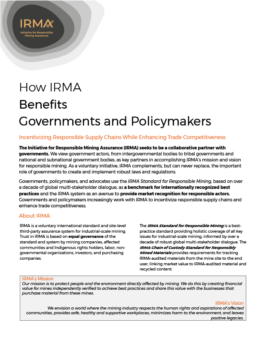 A new resource for the governments and policymakers is now available.
A new resource for the governments and policymakers is now available.
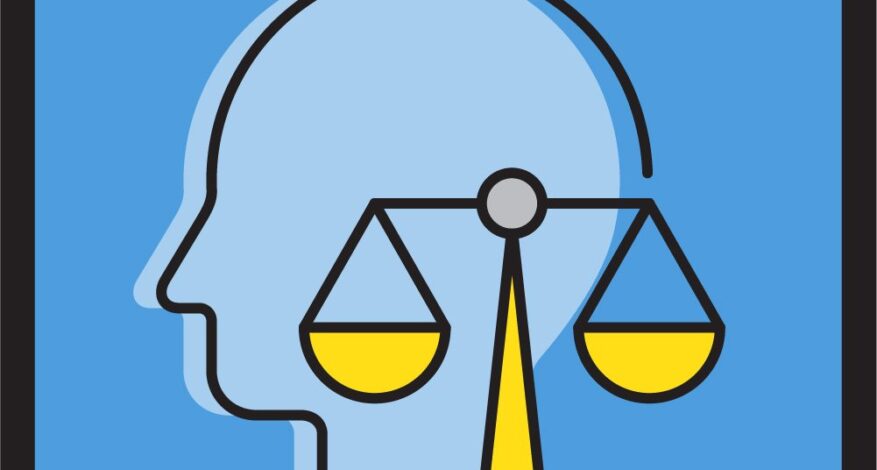
![Black, Chinese & White Laborers in S. African Gold Mine [c1890-1923] Frank & Frances Carpenter. Credit: ralphrepo/CCA 2.0 generic license](https://responsiblemining.net/wp-content/uploads/2025/04/4079402424_e3ca692faf_o-877x470.jpg)
